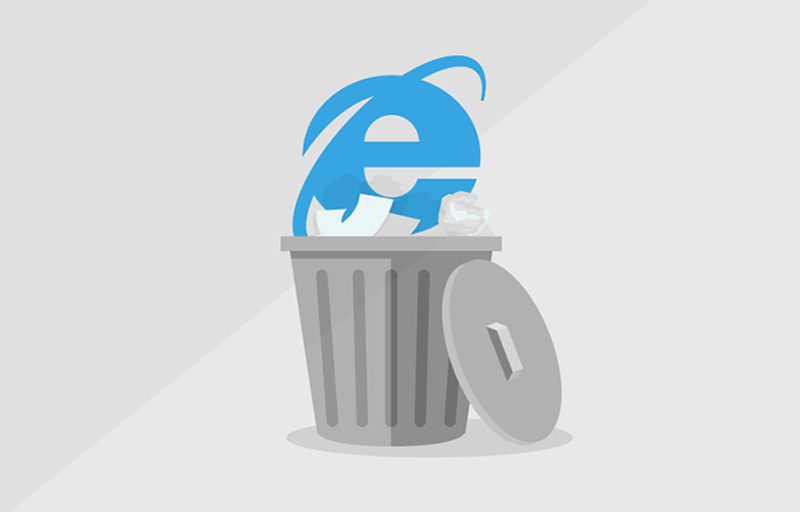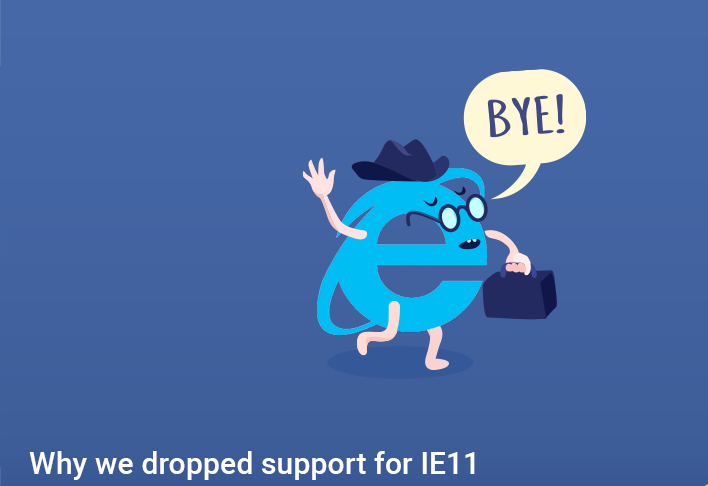
Why Isn’t Internet Explorer Used Anymore As A Browser?
Why Isn’t Internet Explorer Used Anymore As A Browser?
This digital artifact, the first of its type, was launched in August 1995. By 2003, Internet Explorer had swept the globe and seized the lion’s share, accounting for 95 percent of the market. Without a question, it was the most popular web browser.
It was simple to use, and one of its primary differentiators was its continued compatibility with prior versions. This, too, would eventually contribute to its demise. As new versions were released, prior version standards were preserved to ensure that legacy programs built into them could continue to function.
Internet Explorer’s Official End-of-Life Date
Their focus has moved to making Microsoft Edge a competitive browser to compete in today’s digital economy. Microsoft’s lead developer said that Internet Explorer 11 would only be maintained until August 2021, when Windows 10 will reach its end of life.

Internet Explorer was dropped as a browser for a variety of reasons.
There are few and far between updates.
In fact, Microsoft developers have stated that they will only make minor changes in order to keep it functioning at the absolute minimum of capability. If you’re familiar with the European web design frontier, which is rich with fluid effects and micro-transitions, you’ll be disappointed to learn that they’re incompatible with Internet Explorer.
Most current apps and large websites won’t operate with Internet Explorer because their Javascript code is incompatible. Most website developers and companies recognize that it is not worth the time or effort to make a website compatible with Internet Explorer since that money might be better spent on a more attractive website.
According to NetMarketShare, Internet Explorer accounts for less than 10% of desktop online traffic and less than 3% of all online traffic across all devices. It makes logical to devote development resources to the majority of consumers rather than the minority.
Microsoft’s security is at an all-time low, and it may be easily hacked.
They do not currently accept SSL certificates and do not intend to do so in the future, leaving users vulnerable to cryptomining scripts and social trackers. What adds salt to the wound is that defects are detected and corrected on a timetable rather than immediately. This implies that users of Internet Explorer may be subject to known problems that aren’t repaired for months.
When rivals (Mozilla Firefox in 2004 and Google Chrome in 2008) were on the scene, they took a very different strategy. To consistently enhance the security of their apps, Google and Mozilla Firefox pay individuals to report and identify browser flaws. Google Chrome has been updated 70 times in the last decade, compared to only four times for Internet Explorer.
Why does Microsoft continue to support Internet Explorer?
Many firms that created apps in the 1990s and 2000s still rely significantly on Internet Explorer for their legacy programs, according to Microsoft. It now serves as a compatibility solution for older programs rather than a browser of choice, allowing businesses to wait until their enterprise systems can be modernized.
Internet Explorer is coming to an end, but don’t fear, Microsoft is still around. Microsoft has not yet left the building, refocusing its efforts on creating corporate solutions and improving the compatibility of its Edge browser to meet the ever-changing demands of current online users.
Share this:

Client’s review for our work satisfaction.


They were great! I had a great experience working with FSM. They redesigned my company website to become a mobile friendly site. They were very responsive, agile and always willing to help. They were also very fast and managed to deliver our website well before the expected deadline.
Michael Solano
CEO - Geotrek Land Surveyor
FSM is an expert IT Company. Franky helped me with my website. He is a careful and attentive listener. I admire his efforts and am pleased with his performance. He gets 5 stars from me. He is unrivaled. Thank you
Richard Rigosa
Realtor
Highly suggested for those looking to increase their online presence at a low cost. We received excellent service and commendable performance in a short period of time for a fraction of the cost. Excellent customer support!
Joan Nami
Entrepreneur
